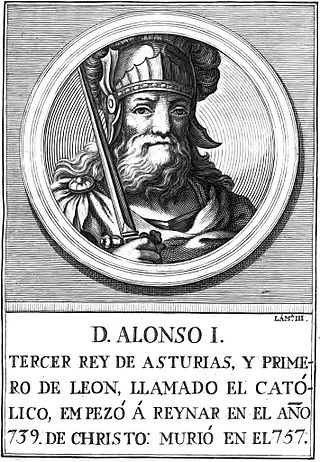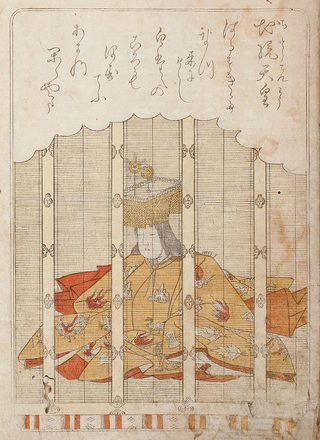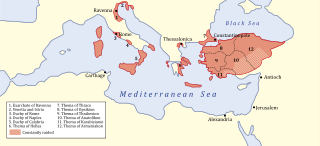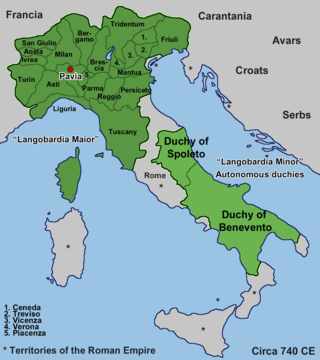Related Research Articles

Pope Gregory III was the bishop of Rome from 11 February 731 to his death. His pontificate, like that of his predecessor, was disturbed by Byzantine iconoclasm and the advance of the Lombards, in which he invoked the intervention of Charles Martel, although ultimately in vain. He was the last pope to seek the consent of the Byzantine exarch of Ravenna for his election, the last pope of Syrian origin, and the last non-European pope until the election of Pope Francis more than 1,271 years later in 2013.
The 740s decade ran from January 1, 740, to December 31, 749.

Year 740 (DCCXL) was a leap year starting on Friday of the Julian calendar, the 740th year of the Common Era (CE) and Anno Domini (AD) designations, the 740th year of the 1st millennium, the 40th year of the 8th century, and the 1st year of the 740s decade. The denomination 740 for this year has been used since the early medieval period, when the Anno Domini calendar era became the prevalent method in Europe for naming years.

Year 703 (DCCIII) was a common year starting on Monday of the Julian calendar, the 703rd year of the Common Era (CE) and Anno Domini (AD) designations, the 703rd year of the 1st millennium, the 3rd year of the 8th century, and the 4th year of the 700s decade. The denomination 703 for this year has been used since the early medieval period, when the Anno Domini calendar era became the prevalent method in Europe for naming years.
Eutychius was the last Exarch of Ravenna, heading the Exarchate from 726 or 727 until 751.

The Duchy of Spoleto was a Lombard territory founded about 570 in central Italy by the Lombard dux Faroald. Its capital was the city of Spoleto.

Liutprand was the king of the Lombards from 712 to 744 and is chiefly remembered for his multiple phases of law-giving, in fifteen separate sessions from 713 to 735 inclusive, and his long reign, which brought him into a series of conflicts, mostly successful, with most of Italy. He is often regarded as the most successful Lombard monarch, notable for the Donation of Sutri in 728, which was the first accolade of sovereign territory to the Papacy.
The Duke of Spoleto was the ruler of Spoleto and most of central Italy outside the Papal States during the Early and High Middle Ages. The first dukes were appointed by the Lombard king, but they were independent in practice. The Carolingian conquerors of the Lombards continued to appoint dukes, as did their successors the Holy Roman Emperors. In the 12th century, the dukes of Spoleto were the most important imperial vassals in Italy. From 1198, the Duchy became under the sovereignty of the States of the Church.

The Donation of Sutri was an agreement reached at Sutri by Liutprand, King of the Lombards and Pope Gregory II in 728. At Sutri, the two reached an agreement by which the city and some hill towns in Latium were given to the Papacy, "as a gift to the blessed Apostles Peter and Paul" according to the Liber Pontificalis. The pact formed the first extension of papal territory beyond the confines of the Duchy of Rome and was the first of two land transfers from Liutprand to the Church of Rome.

Godescalc was the Duke of Benevento in Langobardia minor from 740 until his assassination in 743. Godescalc's accession was without approval of the King.
Transamund II was the Lombard Duke of Spoleto from 724 to 745, though he was twice driven from power by the king, Liutprand. Transamund rose to power by deposing his own father, Faroald II, and tonsuring him in a monastery.
Alboin was the Lombard Duke of Spoleto from 757 to 758. He was chosen to be duke by the Spoletan nobility without the assent of the king.

The Duchy of Rome was a state within the Byzantine Exarchate of Ravenna. Like other Byzantine states in Italy, it was ruled by an imperial functionary with the title of dux. The duchy often came into conflict with the Papacy over supremacy within Rome. After the founding of the Papal States in 756, the Duchy of Rome ceased to be an administrative unit and 'dukes of Rome', appointed by the popes rather than emperors, are only rarely attested.
Thrasimund I or Transamund I was the Count of Capua and then Duke of Spoleto, a faithful follower of Grimoald I of Benevento.
Faroald II was the duke of Spoleto from 703, when he succeeded his own father Thrasimund I.
Agiprand was briefly the Duke of Spoleto between 742 and 744.

The Duchy of Friuli was a Lombard duchy in present-day Friuli, the first to be established after the conquest of the Italian peninsula in 568. It was one of the largest domains in Langobardia Major and an important buffer between the Lombard kingdom and the Slavs, Avars, and the Byzantine Empire. The original chief city in the province was Roman Aquileia, but the Lombard capital of Friuli was Forum Julii, modern Cividale.
Lucerius was the third Abbot of Farfa, succeeding Aunepert in 724 at the latest. He was originally from Provence and had been raised at Farfa by Thomas of Maurienne, the first abbot. Lucerius' abbacy was a period of growth and expansion on the part of the abbey. In his first year, he received a grant of a church with its (unspecified) lands from Duke Thrasimund II of Spoleto. This church, dedicated to Saint Getulius, lay within the jurisdiction of the Diocese of Rieti, and according to the tenth-century Exceptio Relationum Thrasimund had to compensate the bishop for his loss.

The Duchy of Perugia was a duchy in the Italian part of the Byzantine Empire. Its civil and military administration was overseen by a duke (dux) appointed by and under the authority originally of the Praetorian Prefect of Italy (554–584) and later of the Exarch of Ravenna (584–751). Its chief city and namesake was Perugia (Perusia), located at its centre. It was a band of territory connecting the Duchy of the Pentapolis to its northeast with the Duchy of Rome to its southwest, and separating the duchies of Tuscia and Spoleto, both parts of the Lombard Kingdom of Italy. It was of great strategic significance to the Byzantines since it provided communication between Rome, the city of the Popes, and Ravenna, the capital of the Exarchate. Since it cut off the Duke of Spoleto from his nominal overlord, the king ruling from Pavia, it also disturbed the Lombard kingdom, which was a constant thorn in the Byzantines' side. This strategic importance meant that many Lombard and Byzantine armies passed through it.
References
- ↑ Lars Ulwencreutz (November 2013). Ulwencreutz's The Royal Families in Europe V. Lulu.com. p. 350–. ISBN 978-1-304-58135-8.
- ↑ https://en.namu.wiki/w/%ED%9E%90%EB%8D%B0%EB%A6%AC%ED%81%AC(%EC%8A%A4%ED%8F%B4%EB%A0%88%ED%86%A0)
- ↑ Hartmann, Ludo Moritz. Geschichte Italiens im Mittelalter. II, 2, 137–138.
- ↑ Hartmann, II, 2, 139.